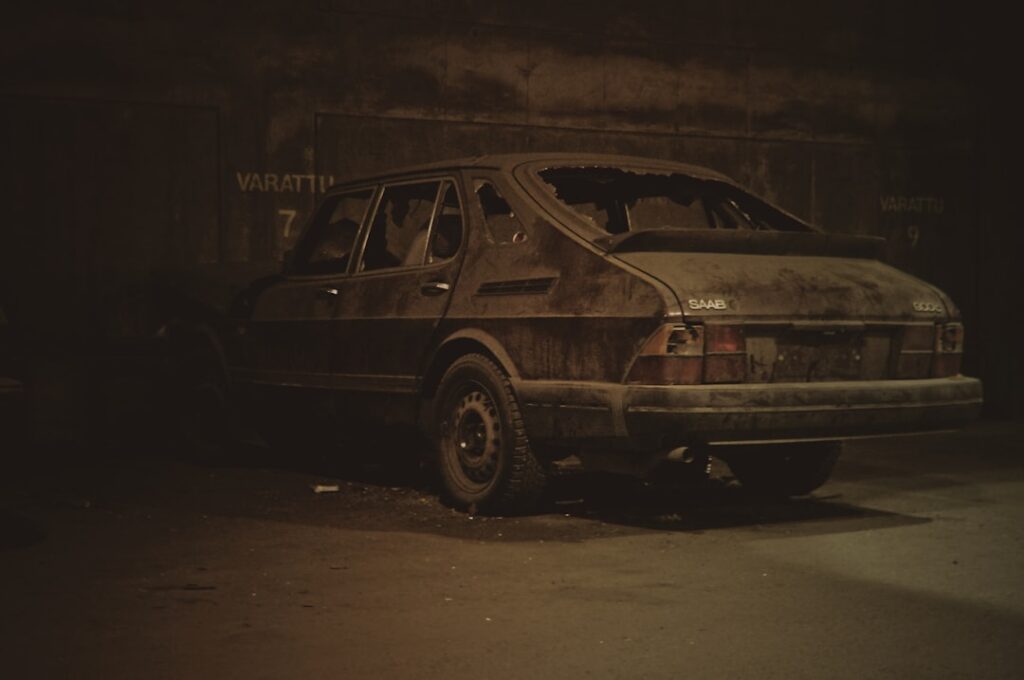Cosmoline is a brown, waxy substance that is used as a rust inhibitor and a protective coating for metal surfaces. It is a petroleum-based product that was originally developed for military use, but has since found its way into various industrial and commercial applications. Cosmoline is known for its ability to protect metal surfaces from corrosion and rust, making it a popular choice for preserving firearms, machinery, and other metal equipment. It has a thick, sticky consistency and a distinctive odor, and it can be applied in various forms such as sprays, pastes, or as a hot-dip coating.
Cosmoline is a versatile product that can be used in a wide range of industries, from automotive and aerospace to marine and manufacturing. It is prized for its ability to provide long-term protection against moisture, salt, and other corrosive elements, making it an ideal choice for preserving metal surfaces in harsh environments. Cosmoline is also known for its ability to withstand extreme temperatures, making it suitable for use in both hot and cold climates. Its unique properties make it an effective solution for preventing rust and corrosion on metal surfaces, and it is widely used in the military, industrial, and commercial sectors.
Key Takeaways
- Cosmoline is a rust preventative compound used to protect metal surfaces from corrosion and moisture.
- Cosmoline was originally developed in the early 20th century for military use and has since been used in various industries including automotive, aerospace, and firearms.
- Cosmoline is commonly used to protect firearms, machinery, and metal parts during storage and shipping.
- To apply Cosmoline, the surface should be clean and dry before the compound is heated and applied in a thin, even coat.
- To remove Cosmoline, it can be softened with heat or solvents, and then wiped or scrubbed off with a brush or cloth. Safety precautions should be taken when using Cosmoline, including proper ventilation and protective gear such as gloves and goggles.
- Alternatives to Cosmoline include other rust preventative compounds such as WD-40, Boeshield T-9, and CorrosionX.
The History of Cosmoline
The history of Cosmoline dates back to the early 20th century when it was first developed as a rust inhibitor for military equipment. It was originally created to protect firearms and other metal components from the harsh conditions of war, including exposure to moisture, salt, and extreme temperatures. The name “Cosmoline” is believed to have originated from the words “cosmic” and “gasoline,” reflecting its ability to protect metal surfaces from the elements.
During World War II, Cosmoline played a crucial role in preserving military equipment and vehicles, helping to ensure their longevity and reliability in the field. After the war, Cosmoline continued to be used by the military and was also adopted by various industries for its rust-inhibiting properties. Over the years, Cosmoline has become synonymous with rust prevention and has earned a reputation as a reliable and effective protective coating for metal surfaces.
Today, Cosmoline is used in a wide range of applications, from preserving firearms and machinery to protecting automotive and aerospace components. Its long history and proven track record make it a trusted choice for preventing rust and corrosion, and it continues to be a popular solution for preserving metal surfaces in demanding environments.
Uses of Cosmoline
Cosmoline is widely used in various industries for its ability to protect metal surfaces from rust and corrosion. One of its primary uses is in the preservation of firearms, where it is applied to gun barrels, receivers, and other metal components to prevent rust and corrosion. Cosmoline is also used in the automotive industry to protect engine parts, chassis components, and other metal surfaces from the effects of moisture, salt, and road debris. In the aerospace sector, Cosmoline is used to preserve aircraft components and equipment, helping to ensure their longevity and reliability in demanding flight conditions.
In addition to its use in firearms, automotive, and aerospace applications, Cosmoline is also used in marine environments to protect metal surfaces on ships, boats, and offshore equipment. Its ability to withstand exposure to saltwater and harsh weather conditions makes it an ideal choice for preserving metal surfaces in marine environments. Cosmoline is also used in manufacturing and industrial settings to protect machinery, equipment, and metal structures from rust and corrosion.
Overall, Cosmoline is a versatile product that is used in a wide range of industries for its ability to provide long-term protection against the damaging effects of moisture, salt, and other corrosive elements. Its effectiveness in preventing rust and corrosion makes it an essential solution for preserving metal surfaces in demanding environments.
How to Apply Cosmoline
| Steps | Details |
|---|---|
| Clean the Surface | Use a degreaser to remove any dirt or oil from the surface. |
| Apply Cosmoline | Use a brush or spray to apply a thin, even coat of Cosmoline to the surface. |
| Let it Dry | Allow the Cosmoline to dry for the recommended time, usually 24 hours. |
| Wipe off Excess | Use a clean cloth to wipe off any excess Cosmoline from the surface. |
| Reapply if Necessary | If needed, reapply Cosmoline for added protection. |
Applying Cosmoline requires careful preparation and attention to detail to ensure effective coverage and protection of metal surfaces. Before applying Cosmoline, it is important to clean the metal surface thoroughly to remove any dirt, grease, or other contaminants that may interfere with adhesion. Once the surface is clean, Cosmoline can be applied using various methods such as spraying, brushing, or dipping, depending on the size and shape of the metal component.
When applying Cosmoline by spraying, it is important to use a high-quality spray gun or applicator to ensure even coverage and penetration into tight spaces and crevices. For brushing applications, a high-quality brush with synthetic bristles is recommended to ensure smooth and consistent coverage of the metal surface. When using Cosmoline as a hot-dip coating, the metal component is immersed in molten Cosmoline to ensure complete coverage and penetration into all areas.
After applying Cosmoline, it is important to allow sufficient time for the coating to dry and cure before handling or storing the metal component. This will ensure that the Cosmoline forms a protective barrier against moisture, salt, and other corrosive elements. Proper application of Cosmoline is essential for ensuring long-term protection of metal surfaces from rust and corrosion.
How to Remove Cosmoline
Removing Cosmoline from metal surfaces requires careful attention to ensure thorough cleaning without damaging the underlying material. There are several methods for removing Cosmoline, depending on the size and shape of the metal component as well as the amount of Cosmoline present. One common method for removing Cosmoline is using a solvent such as mineral spirits or kerosene to dissolve the waxy coating. These solvents can be applied using a brush or rag to loosen the Cosmoline from the metal surface.
Another method for removing Cosmoline is using heat to soften the waxy coating, making it easier to wipe or scrape away. This can be done using a heat gun or hair dryer to gently warm the Cosmoline before wiping it away with a rag or scraper. For larger metal components or heavy buildup of Cosmoline, steam cleaning or pressure washing may be necessary to effectively remove the waxy coating.
After removing the Cosmoline, it is important to thoroughly clean the metal surface with a degreaser or solvent to remove any remaining residue. This will ensure that the metal surface is clean and free from any contaminants before applying a new protective coating or finish. Proper removal of Cosmoline is essential for preparing the metal surface for further treatment or use.
Safety Precautions when Using Cosmoline

When using Cosmoline, it is important to take proper safety precautions to protect yourself and others from potential hazards associated with handling petroleum-based products. One of the primary safety precautions when using Cosmoline is ensuring adequate ventilation in the work area to prevent inhalation of fumes or vapors. This can be achieved by working in a well-ventilated area or using exhaust fans or respirators to remove airborne contaminants.
It is also important to wear appropriate personal protective equipment such as gloves, goggles, and protective clothing when handling Cosmoline to prevent skin contact and eye irritation. Gloves should be made of chemical-resistant materials such as nitrile or neoprene to provide protection against contact with the waxy coating. Goggles or safety glasses should be worn to protect the eyes from splashes or fumes during application or removal of Cosmoline.
In addition to personal protective equipment, it is important to follow proper handling and storage procedures for Cosmoline to prevent spills or accidents. This includes storing Cosmoline in sealed containers away from heat sources or open flames to prevent ignition or combustion. Proper labeling of containers and following manufacturer’s recommendations for handling and disposal of Cosmoline are essential for ensuring safe use of the product.
Overall, taking proper safety precautions when using Cosmoline is essential for protecting yourself and others from potential hazards associated with handling petroleum-based products. By following these precautions, you can ensure safe and effective use of Cosmoline in various applications.
Alternatives to Cosmoline
While Cosmoline is a popular choice for protecting metal surfaces from rust and corrosion, there are several alternatives available that offer similar benefits with different properties. One alternative to Cosmoline is Teflon-based coatings that provide excellent lubrication and corrosion resistance for metal surfaces. These coatings are known for their low friction properties and resistance to moisture and chemicals, making them suitable for use in automotive, aerospace, and industrial applications.
Another alternative to Cosmoline is zinc-rich coatings that provide sacrificial protection against rust and corrosion by forming a protective barrier on metal surfaces. These coatings are commonly used in marine environments where exposure to saltwater can cause rapid corrosion of metal components. Zinc-rich coatings are also used in industrial settings where long-term protection against rust and corrosion is required.
In addition to Teflon-based coatings and zinc-rich coatings, there are also synthetic waxes and polymer-based coatings that offer effective protection against rust and corrosion. These coatings are designed to provide long-lasting protection for metal surfaces in demanding environments while offering different properties such as high temperature resistance or low friction characteristics.
Overall, there are several alternatives to Cosmoline that offer similar benefits for protecting metal surfaces from rust and corrosion. By exploring these alternatives, you can find a solution that best suits your specific application requirements while providing long-term protection for your metal components.
Sure, here’s a paragraph that mentions a related article to cosmoline and includes the link as an tag:
“Looking to learn more about the benefits of using cosmoline for firearm maintenance? Check out this insightful article on CrossFit Furion’s website, which delves into the advantages of cosmoline in preserving and protecting firearms. Whether you’re a seasoned gun enthusiast or just starting out, understanding the importance of proper maintenance and protection for your firearms is crucial. Click here to read the full article and discover how cosmoline can help extend the lifespan of your firearms.”
FAQs
What is cosmoline?
Cosmoline is a brown-colored, waxy petroleum-based corrosion inhibitor that is used to protect metal surfaces from rust and corrosion.
Where is cosmoline commonly used?
Cosmoline is commonly used in the military and aerospace industries to protect firearms, machinery, and equipment during storage and transportation.
How does cosmoline work?
Cosmoline forms a protective barrier on metal surfaces, preventing moisture and oxygen from coming into contact with the metal and causing corrosion.
Is cosmoline safe to handle?
While cosmoline is effective at protecting metal surfaces, it can be messy and difficult to remove. It is important to handle cosmoline with care and use proper protective equipment when working with it.
How do you remove cosmoline from metal surfaces?
Cosmoline can be removed from metal surfaces using solvents, heat, or mechanical methods such as scraping or sandblasting. It is important to follow proper safety procedures when removing cosmoline.








